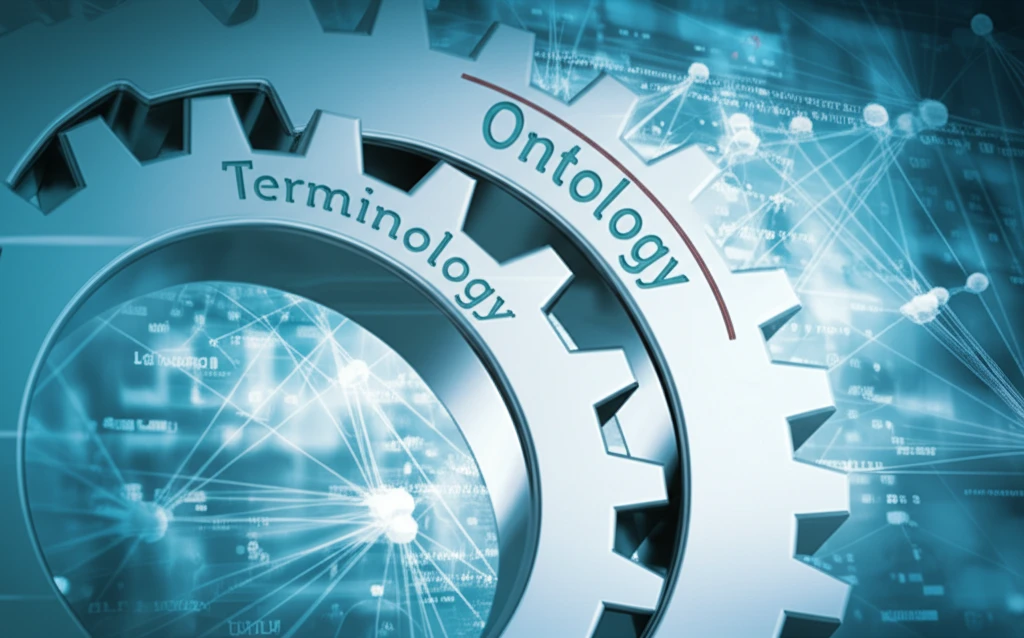
Decoding Knowledge: How Ontology and Terminology Theories Shape Our Understanding
"Exploring the convergence and divergence of Ontology and Terminology in organizing complex information, particularly in Biomedicine."
In today's information age, effectively capturing and structuring human knowledge is essential for building robust systems of knowledge organization. This complex task involves not only defining entities but also establishing clear relationships between them, enabling accurate classification and retrieval. Within the field of information and knowledge representation, both established and emerging theories vie for prominence, each offering unique approaches to this challenge.
Among the established theories, Terminology provides a set of principles governing the study of terms and their application in creating models of reality. The theory focuses on the analysis of terms to create models for communication. Emerging alongside this is Applied Ontology, which applies philosophical principles to the organization of information and knowledge, aiming to construct specific types of knowledge organization systems. As a philosophical concept, it has many aspects.
The field of Biomedicine exemplifies the use of both Terminology and Applied Ontology. Biology and medical vocabularies have been historically based on terminological work. In contrast, biomedical science sees the largest numbers of direct applications of theories related to applied ontology. By comparing these theories, and using biomedicine as an example, we aim to clarify the strengths and weaknesses of each and offer greater assistance in applying them.
Terminology vs. Ontology: Unpacking the Core Concepts

Before diving into a practical comparison, it’s crucial to define the specific technical terms used by each theory. This involves understanding the 'dialects' of both Terminology and Applied Ontology—the unique set of technical terms each employs to describe and relate entities. By comparing these dialects, we can identify areas of convergence and divergence, providing a clearer picture of how each theory approaches knowledge organization.
- Relations: The ISO-704 standard also addresses relationships between concepts. Key relationships include generic relations (connecting concepts based on shared characteristics), partitive relations (linking concepts representing parts of a whole), and individual relations (connecting generic concepts to specific instances).
- Ontology: In contrast, Applied Ontology, particularly the Basic Formal Ontology (BFO), also operates with a specific vocabulary. Key concepts include:
- Genus-species: The relationship between a general category and its specific types.
- Essence: The fundamental nature of an entity that makes it what it is.
- Necessary and sufficient conditions: The criteria that must be met for an entity to belong to a specific category.
- Multiple inheritance: The ability of an entity to inherit characteristics from multiple parent entities.
- Universals and Particulars: Applied Ontology distinguishes between universals (abstract concepts) and particulars (real-world instances). Relationships are categorized based on these distinctions, including:
- Universal to universal: Hierarchical relationships between abstract concepts.
- Instance to universal: Connecting a specific instance to its corresponding abstract concept.
- Instance to instance: Relationships between individual occurrences.
Bridging the Divide: Towards a More Integrated Approach
This comparison highlights both the complementary strengths and the persistent gaps between Terminology and Applied Ontology. While Applied Ontology offers more formal rigor in defining relationships, Terminology provides a systematic approach to crafting definitions. The choice between these theories depends heavily on the specific goals of the knowledge organization system. In Biomedicine, the primary concern is often ensuring a shared understanding, making clarity and preservation of intended meaning paramount. By recognizing the value in both approaches, information professionals can navigate complex domains more effectively, creating knowledge systems that are both robust and accessible.
